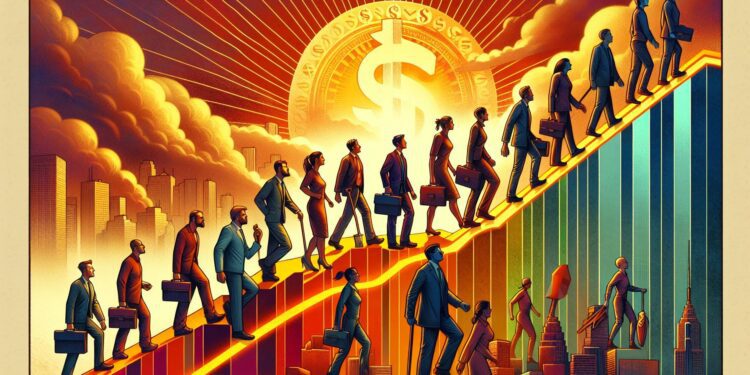In June, wages for American workers who stayed in their jobs rose by 4.9% from the previous year, the slowest growth since August 2021, according to data from ADP released Wednesday. For those who changed jobs, annual wage increases declined for the third straight month, rising by 7.7% year over year, down from 7.8% the previous month and significantly lower than the 16.4% peak seen in June 2022. ADP chief economist Nela Richardson noted that the labor market is in a different regime compared to the past, where job-stayer wage growth was either flat or rising.
She questioned how low it will go, challenging the idea that job stayer growth would return to pre-pandemic levels. Despite some signs of slowing, the still-elevated pay gains for job switchers indicate tightness in the labor market. Data released Tuesday showed 8.14 million job openings at the end of May, up from 7.92 million in April.
Overall, labor market data suggest a move towards stability without a rapid slowdown. ADP’s data showed 150,000 jobs added to the private sector in June, down from 157,000 in May.
Wage trends raise labor market questions
Richardson stated that a monthly job addition range of 120,000 to 150,000 keeps the labor market balanced, avoiding overheating while not signaling a significant slowdown. “The real concern would be a sudden decrease in job gains,” Richardson added. “It’s the rate at which the economy evolves, not necessarily the level.
And if we see the cooldown go from gradual to steep, I think that’s a warning bell.”
On Wednesday, data showed nearly 1.86 million continuing unemployment claims were filed in the week ending June 29, up from 1.83 million the week prior. Oxford Economics lead US economist Nancy Vanden Houten wrote in a note to clients that while layoffs remain low for now, the rise in claims reflects more workers applying for benefits because they are finding it more difficult to find jobs as the pace of hiring slows. Despite the recent increase, initial claims remain below the level that would signal a significant slowdown in job growth.
Vanden Houten also noted that current labor market conditions allow the Federal Reserve to be patient before lowering interest rates, though recent favorable inflation data provide them with the flexibility to respond to any unexpected weakening in the labor market. The next major labor market update will come on Friday with the closely followed nonfarm payroll report from the Bureau of Labor Statistics. The report is expected to show that 190,000 nonfarm payroll jobs were added to the US economy in June, with unemployment holding steady at 4%, according to Bloomberg data.


